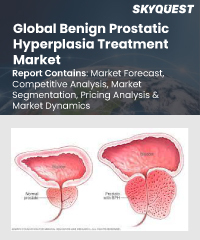
Report ID: SQMIG35E2045

Report ID:
SQMIG35E2045 |
Region:
Global |
Published Date: February, 2024
Pages:
157
|
Tables:
64 |
Figures:
75
Benign Prostatic Hyperplasia Treatment Market size was valued at USD 11.2 billion in 2022 and is poised to grow from USD 11.8 billion in 2023 to USD 18.1 billion by 2031, growing at a CAGR of 5.5% in the forecast period (2024-2031).
Several factors contribute to the market growth of BPH treatment. Firstly, the increasing prevalence of BPH globally is a key driver. As the aging population continues to grow, the incidence of BPH rises, resulting in a larger patient pool seeking treatment. This demographic trend has fueled the demand for innovative and minimally invasive treatment solutions. Minimally invasive procedures such as transurethral resection of the prostate (TURP), laser therapy, and prostatic artery embolization (PAE) have gained prominence due to their reduced invasiveness, shorter recovery times, and fewer complications compared to traditional surgical approaches. These advancements have not only improved patient outcomes but also expanded the market by attracting more patients seeking effective and less invasive treatments. Additionally, increased awareness about BPH and the availability of treatment options have played a crucial role in market growth. Public health initiatives, educational campaigns, and the efforts of healthcare providers have contributed to better understanding and recognition of BPH symptoms, leading to earlier diagnosis and treatment initiation. This has resulted in a higher demand for BPH treatment modalities, positively impacting market growth. The global market for BPH treatment is also influenced by the regulatory landscape and reimbursement policies. Government initiatives to provide favourable reimbursement policies and support the adoption of innovative BPH treatment methods have stimulated market growth.
Our industry expert will work with you to provide you with customized data in a short amount of time.
REQUEST FREE CUSTOMIZATIONWant to customize this report? This report can be personalized according to your needs. Our analysts and industry experts will work directly with you to understand your requirements and provide you with customized data in a short amount of time. We offer $1000 worth of FREE customization at the time of purchase.

Report ID: SQMIG35E2045